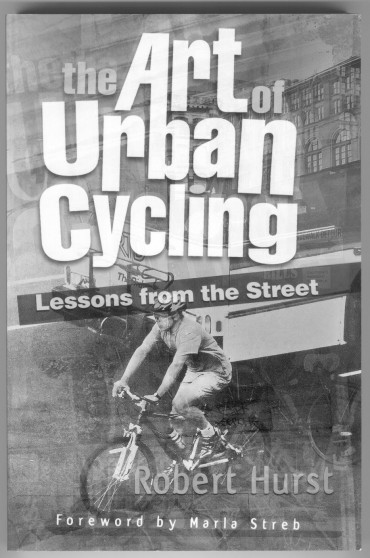The Art of Urban Cycling
A book by Robert Hurst offers "Lessons from the Street"
By Mitch Trujillo, PCI #244T
Boulder PD (CO)
IPMBA Industry Relations Committee
Many cyclists among us have colorful stories about accidents. It's safe to say that the riders probably carry some mental and physical scars from the event. Still, it's not uncommon to find them bragging about their experience and exhibiting the disfiguring scars like badges of honor. If those scars could only talk.
As I became more bike-wise from my own 'cycling episodes', I found out that the odds were more in my favor if I removed several factors from the urban cycling equation. For example, I'd select routes that kept me off the busier streets. By minimizing my contact with vehicles of all shapes and sizes, I was lessening my chance of a car vs. me accident, thus, effectively not adding to the scars. This became, somewhat, art out of necessity - if you know what I mean.
So it wasn't a surprise when I opened Hurst's paperback, The Art of Urban Cycling, and found a whole section devoted to "Route Selection". It's encouraging when there is someone out there who thinks like you do. I also found there were other sections in the book that aided in cyclist survival. My survival. In fact, Hurst compiled a host of tidbits on commuter-cycling wisdom into 234 pages.
I immediately took a liking to the format of Hurst's book. The book was laid out into seven sections, or units, with several small chapters contained within each unit. The chapters were short enough that I could sit down and read one or several chapters. This is a nice feature if you have to repeatedly bookmark due to frequent interruptions.
I enjoyed the way Hurst broke down the cyclist experience and scrutinized the behaviors that I've practiced and taught. As a good scholar should, I critiqued his take on a couple topics. I think Hurst would've welcomed it. For example, Hurst wrote that "Vehicular Cycling" is a "great starting point for beginners" and went on to critique the principles of vehicular cycling. Hurst proposed an unorthodox "mature" and "enlightened style" of cycling. Some of these bold points were, well….taken, but if there were premises that I disagreed with, it was Hurst's notions of "liberal" (Hurst's description) adherence to traffic law and lane usage. These seem to be dangerous postures to promote. Even though these messages proved provocative, he reaffirmed much of my commuter-cycling knowledge.
Finally, Hurst features an informal writing style infused with a good deal of dry wit. The black and white graphics enhanced and balanced the text. The "Chapter Notes" and "Bibliography" were useful reference tools.
Overall, I enjoyed reading Hurst's The Art of Urban Cycling. True to its title, it was like reading a book about the art of urban cycling, subject to Hurst's interpretation. I have to think the book is based on the harrowing and disfiguring experiences from which urban cyclists have learned firsthand.
Regular Cost: $14.95
Contact: Falcon® (an imprint of The Globe Pequot Press) at www.falcon.com.
Mitch is an IPMBA Instructor Trainer, an IMBA National Mountain Bike Patroller, and has a penchant for singlespeeds. He can be reached at trujillom@ci.boulder.co.us.
© 2004 IPMBA. This review appeared in the Fall 2004 issue of IPMBA News.

